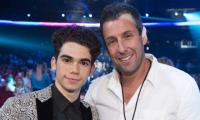PARIS: In two decades orbiting the Earth the International Space Station has become a cutting-edge cosmic laboratory, with astronauts researching everything from black holes to disease and even gardening in microgravity.
The ISS, which orbits about 250 miles above Earth, is as large as a football field inside and divided up like a beehive into spaces where the crew can carry out experiments with guidance from researchers on the ground. Often, the astronauts are also the guinea pigs.
More than 3,000 scientific tests have been carried out at the ISS since its manned missions began in 2000. "From a science perspective, there have been some major discoveries," said Robert Pearlman, space historian and co-author of "Space Stations: The Art, Science, and Reality of Working in Space".
On Thursday, US astronauts Shane Kimbrough and Megan McArthur, the Japan Aerospace Exploration Agency’s Akihiko Hoshide and the European Space Agency’s Thomas Pesquet will blast off for the ISS aboard the SpaceX mission Crew-2.
Divers discover lost WWI warship HMS Nottingham 109 years later
Scientists have invented system to convert water and dust from Moon into fuel
It has been suggested that low vitamin D might lead to heart diseases
Qualcomm all set to host first Snapdragon Auto Day
In recent study, scientists has unveiled the side effects of clean air
'Rich Dad Poor Dad' author Robert Kiyosaki predicts future of crypto market







